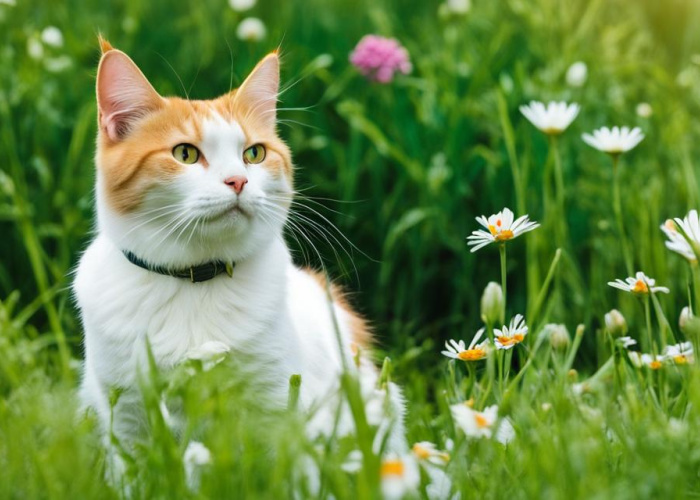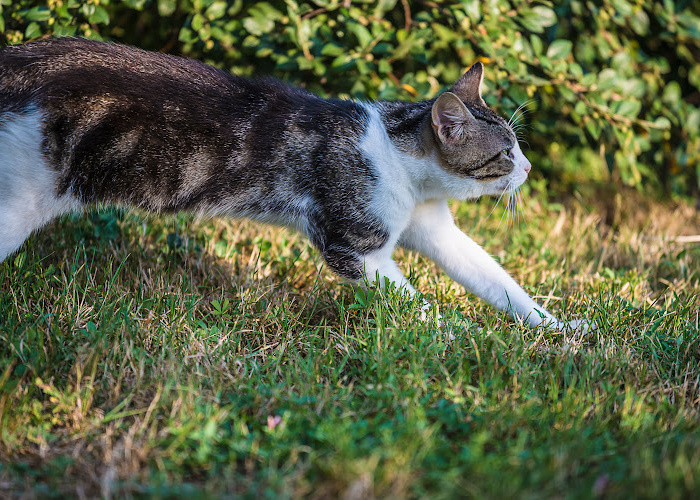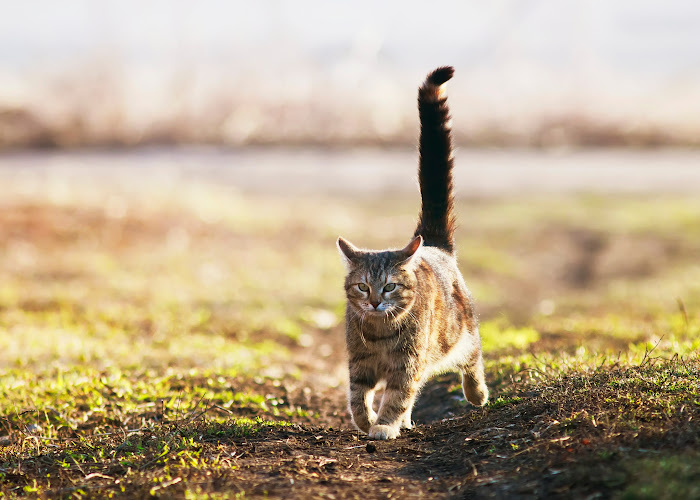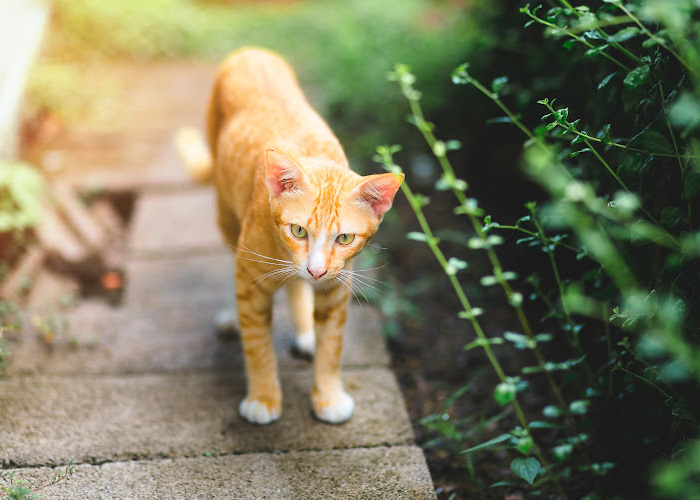It's crucial to know that students with autism and ADHD need special study strategies. Autism…

Can Cats Be Autistic? Understanding Feline Behavior
Is it possible for our feline companions to exhibit autism-like traits? While there is currently no scientific evidence to support the idea that cats can suffer from autism, certain feline behaviors may appear similar to symptoms observed in humans on the autism spectrum.
In this article, we will explore what may be misconstrued as autistic cat behavior, possible causes behind these traits, and how to address concerns that may arise from your cat’s symptoms.
Autism is a human neurodevelopmental disorder characterized by challenges in social interaction, communication, and behavior. Likewise, some cats may exhibit repetitive actions, excessive vocalization, sensitivity to sensory input, and resistance to change that could be mistaken for autism in cats symptoms.
As pet owners, it is essential to remember that each cat is unique, and understanding their individual qualities and needs is crucial for ensuring their well-being.

Exploring the Myth: Can Cats Be Autistic?
While cats cannot have Autism Spectrum Disorder as diagnosed in humans, they may exhibit behaviors that could be construed as similar to those associated with autism. Such behavioral signs include avoiding eye contact, resisting human contact, hypersensitivity to touch or noise, reluctance to be held or touched, and displaying repetitive behaviors.
These may be attributed to a variety of environmental or genetic factors rather than a diagnosis of autism. It is paramount to understand that what some perceive as cat autism could, in fact, be signs of other conditions such as anxiety, special needs due to birth defects or accidents, or natural independent tendencies (especially in cats that spend the majority of their time indoors).
Debunking Common Misconceptions About Cat Autism
Though cats may display behaviors similar to those observed in humans diagnosed with autism, there is no scientific evidence supporting the existence of Autism Spectrum Disorder in cats. Many misinterpret the aforementioned signs as cat autism, when in reality, these behaviors may be indicative of other conditions or natural feline tendencies.
Understanding the true nature of these behaviors allows cat owners to provide proper care and support.
Similarities Between Feline Behaviors and Autism-Like Traits
Autism-like traits observed in feline behaviors include avoiding eye contact, resisting human contact, displaying repetitive behaviors, and demonstrating hypersensitivity to touch or noise. It is important to note that these traits merely resemble those found in humans diagnosed with autism; they do not confirm or suggest that cats can be diagnosed with Autism Spectrum Disorder.
The Influence of Genetics and Environment on Cat Behavior
The behaviors often misconstrued as signs of autism in cats can be attributed to a combination of environmental and genetic factors. Cats that spend the majority of their time indoors may develop issues such as anxiety or obsessive-compulsive disorder (OCD), which can manifest in behaviors resembling autism-like traits. Certain cat breeds may also display more pronounced behaviors.
For example, Siamese cats may exhibit increased vocalization and attention-seeking tendencies.
| Autism-Like Traits in Cats | Possible Reasons |
|---|---|
| Avoiding eye contact | Anxiety, fear, or natural independent tendencies |
| Resisting human contact | Special needs due to birth defects or accidents, past trauma, or natural independent tendencies |
| Hypersensitivity to touch or noise | Physical sensitivities, anxiety, or history of trauma |
| Repetitive behaviors | OCD, anxiety, or natural independent tendencies |
When observing such behaviors in their feline companions, cat owners should consult with a veterinarian for a comprehensive evaluation and accurate diagnosis. This will ensure proper care and management of their pet’s unique needs and behavioral concerns.

Interpreting Feline Behaviors and Special Needs
While it is crucial to acknowledge that cats cannot have autism in the same sense as humans, they can exhibit behaviors often mistaken for autism-like symptoms. Understanding these behaviors and addressing the special needs of your feline friend is essential for their well-being.
In this section, we will delve into the characteristics misconstrued as cat autism, the importance of understanding your cat’s unique personality, and various conditions that may mimic autistic traits in cats.
Characteristics Mistaken for Cat Autism
Common misconceptions about cat behavior include avoiding social interaction, disliking physical touch, and displaying repetitive actions or hypersensitivity to external stimuli. However, it is essential to consider that cats are creatures of habit who thrive in a stable environment, and any deviations can result in stress or anxiety, not autism. Cats may have special needs that resemble autistic traits, originating from congenital disabilities, sensory impairments, or PTSD due to trauma.
Understanding Your Cat’s Unique Personality and Needs
Each cat has a distinct personality and set of needs, and it is vital for cat owners to recognize and appreciate these differences. When faced with traits suggesting special needs, such as refusing to be touched or showing repetitive behaviors, it is essential to seek veterinary advice. A veterinarian’s insights can help distinguish between typical cat behavior and potential health issues requiring intervention, such as medications or environmental adaptations.
Assessing Stress and Anxiety in Cats
Stress and anxiety can significantly impact a cat’s quality of life and may manifest in behaviors that resemble autism-like symptoms. By closely observing your cat’s behavior and consulting a veterinarian, it is possible to identify the causes of stress or anxiety and implement appropriate treatments or environmental modifications to alleviate these issues.
Conditions That May Mimic Autism in Cats
Several conditions may mimic autism symptoms in cats, such as congenital disabilities, sensory impairments, or PTSD from traumatic events. As a caring cat owner, it is crucial to adopt a compassionate approach and work closely with a veterinarian to manage these behavioral concerns and ensure the best quality of care for your cat with special behavioral needs.

FAQ
Can cats be diagnosed with Autism Spectrum Disorder?
No, cats cannot be diagnosed with Autism Spectrum Disorder as it is a human neurodevelopmental disorder. However, they may exhibit behaviors that resemble autism-like traits in humans.
What are some behaviors that can be mistaken for autism in cats?
Behaviors such as avoiding eye contact, resisting human contact, hypersensitivity to touch or noise, reluctance to be held or touched, and displaying repetitive behaviors can be incorrectly attributed to autism in cats. These behaviors can have various other causes, including environmental factors, genetic predisposition, or other health concerns.
How can I determine if my cat has special needs or if their behavior is simply a result of their breed or environment?
If you are concerned about your cat’s behavior, consult with a veterinarian for a comprehensive assessment. A veterinarian can help rule out medical issues and can provide guidance on the appropriate care or treatment for your individual cat based on their unique needs.
Are certain cat breeds more likely to exhibit autism-like behaviors?
Some cat breeds may display more noticeable behaviors, such as Siamese cats which may exhibit more vocal and attention-seeking behaviors. However, these breed-specific traits do not indicate autism, as cats cannot be diagnosed with Autism Spectrum Disorder.
Can stress or anxiety cause behaviors similar to those associated with feline autism?
Yes, stress and anxiety can cause some behaviors that may be mistaken for autism in cats. It is essential to understand that cats are creatures of habit, and any deviations from their normal environment can result in stress or anxiety. If these behaviors persist, consult a veterinarian for appropriate guidance and intervention.



This Post Has 0 Comments